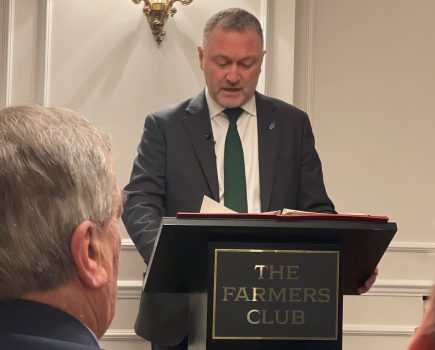The Ides of March was a date in the Roman calendar which corresponds to the fifteenth of March, the day I am writing this, and was a deadline for settling debts.
By the time you read this, another deadline will have expired: the eighteenth of March, the date that the safe corridor agreement in the Black Sea ends. The rumours are that Russia will extend the agreement, but for only 60 days rather than 120. In truth Russia has been able to continue exporting about four million tonnes of grain per month anyway, a lot of which does not need the corridor.
I think the market has already discounted the price in anticipation of the corridor remaining open, so if it does, wheat should not fall anymore. On the other hand, last October, when Russia said it would close the corridor, futures spiked £15 in two days, but then collapsed afterwards when it was re-opened. It’s difficult to imagine that Russia won’t do something to at least disrupt the trade to the west, so the market holds its breath.
Since my last report, all grain and oilseed commodities prices have been hammered, with new contract low points reached on most futures markets. Today our old crop May wheat futures are £12 lower than when the war started. However, at the end of January that was holding at £225, but when the big hedge funds bought back their wheat long, it pushed the market back up to £245 by the middle of February and since then we have lost £31.
Bearing in mind the still bullish backdrops to all this, if you wrote these events as a play or book it would be considered too far-fetched to be published. Of, course traders naturally want to trade and so the most difficult thing to do is nothing. There is still time for this slide to stop, but why should it? Well, despite the USDA seemingly willing the wheat market lower with every report it produces on world supply and demand and stocks, there are other factors to consider.
Firstly, why is it that today we have new crop November wheat futures at a £7 premium to old crop? That suggests that the concern about new crop wheat production is greater than is admitted. Already the biggest producers of global wheat this year, Russia and Australia, have flagged up that they won’t have anything like the size of crop from the 2023 harvest.
The drought problems in North and South America have been well documented. Closer to home, Spain is still dry, but the French spring barley crop has just been saved by recent rain. Like a lot of Europe, regular rain is needed to replace sub soil moisture.
I think one of the main reasons for the poor predicted wheat crop is the lack of nitrogen and urea. Cast your mind back to last autumn, when fertiliser was £900 per tonne and most Eastern European plants were shut. That must mean that fertiliser input was cut back by 20% at least, and that’s a lot of lost yield.
Next, the UK has not stopped selling export feed wheat since the first of January; since it became cheaper, sales increased, so we remain on course to liquidate our surplus before harvest.
Then the spectre of the huge hedge funds gambling with Monopoly money remains. With less physicals left to trade they are increasing their holdings in futures. They are currently short of 15 million tonnes of old crop wheat futures, a record open position. We saw in January and February, when they reduced their short by four million tonnes, the bullish effect it had on the market. They have to buy this short back by May or June.
Lastly, we have macroeconomics back in the picture. With the recent failure of a bank, the question must be asked; if they went bust because of the high interest rates, how many more are in a similar position? Credit Suisse have just been bailed out by the Swiss National Bank. If this contagion spreads to others, we may see a wider financial crisis like 2008/09. If that happens the same big hedge funds, which are already jittery about their record wheat short, may also decide to sell off shares in banks and switch to buying commodities instead.
Right now maize and wheat futures look very cheap if these big players want to re-invest some of their Monopoly money. To misquote Winston Churchill, I am not saying that it’s the end of the downward spiral of grain prices, or even the beginning of the end, but it could be the end of the beginning.







